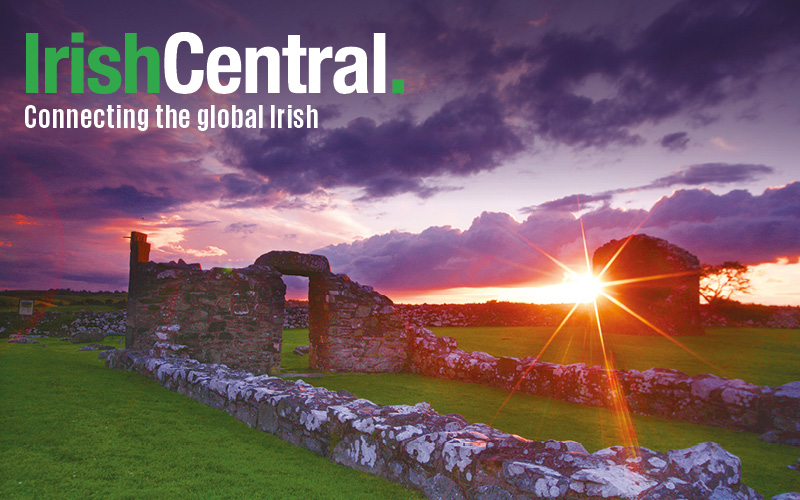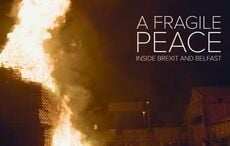You can see the tragedy of partition best in Donegal, I think.
You can see it in all the long abandoned railway lines that run for miles toward collapsing viaducts and unused stone and steel bridges, remarkable feats of 19 century engineering that serve no purpose now except to be explored by spirited teens on a summer's day out.
Within a few decades of partition the once remarkable national Irish rail network, which had functioned like a countrywide central nervous system, was ripped out.
We in Donegal would find ourselves politically decapitated, as two centuries of developing trade and commerce links were suddenly cut, collateral damage in a wider political redistricting.
Because of our isolation I’ve always thought of County Donegal as Ireland’s orphan county, or as a sort of phantom limb, a land surrendered figuratively and literally by both the Republic and Northern Ireland.
It was as if we were the last echo and embodiment of that destructive national severance, a place of great promise and a reminder of how far away from fulfillment it now was.
World War II had curtailed the rail system in the Republic. Fighting Hitler, Britain found that it had no coal to spare for nearby neutral Ireland. For the duration of the war effort Irish steam engines were often forced to run on poor quality Irish coal, or on wood, and often they didn’t run at all.
The sharp drop in the quality of the fuels was accompanied by a drop in quality and frequency of rail service itself. Engines weren’t replaced, public cars weren’t either. This in turn discouraged rail travelers, whose numbers were already diminishing due to the unpredictable service, the increasingly more reliable bus services, and the crisis levels of economically enforced emigration.
But after the partition of Ireland the curtailment and eventual closure of almost all cross–border rail routes hit Donegal the hardest. It wasn’t just a failure of politics in Northern Ireland and the Republic – although it’s undeniable now that partition damaged cooperation, access and growth.
Spot the difference: Ireland's railway network in 1920 and how it looks today. pic.twitter.com/WIpFPf49a2
— Ryan McAleer (@RyanMcAleerUH) July 28, 2016
Growing up there I discovered that we were no one’s priority, because we were considered neither here nor there.
Historically we were considered a place apart, but now we had become a no man’s land where both communities from Northern Ireland liked to come to escape the pressure of life in their own jurisdiction – or, you know, just for a nice day out in an otherworldly landscape.

My grandfather, seated right, at the train station in Buncrana, County Donegal before the Civil War.
It was easy to find them. The tracks had been pulled up but the strong foundations were all still clearly visible. Sometimes they were pristine, sometimes overgrown, sometimes a farmer or a businessman had dug them up to plant potato drills or build a motor inn.
When life is a hardscrabble, you don’t develop a reverence for the people and places that preceded you. The men I grew up around would have bulldozed Tara or dynamited Newgrange to build a multi-story car park if there had been some money in it. Continuity was an luxury they decided they couldn’t afford.
Because of that certain hardness of mind, what was lost – a national rail grid and behind that a unified nation – was not lamented by the mass of people, who were too busy having their hearts scalded watching their children take boats to England and America and not expecting to ever see them again.

I was a teenager in Charles Haughey's 1980’s by which time the Republic of Ireland – and Donegal in particular – looked like a bucolic backwater after a A-bomb drop. Donegal then was a place of absences, ruined castles, abandoned mills, collapsed cottages, quiet streets and broken infrastructure. For our government in faraway Dublin, we might as well have been the moon.
But I loved it. Out walking I could still see the county that my grandfather had known. Running along the epic shoreline of Lough Swilly, the old train route must have been a breathtaking thing. It was easy to imagine the theatre of the trains arrival in my hometown, the steam and whistles, as it pulled into the picturesque station built in 1863 that is nowadays a bar and national award winning restaurant.
So to me growing up Donegal became an emblem of our lost potential as a nation and a reminder of how transcendent it might have been. The landscape is otherworldly, it can leave you awestruck and speechless, gaping at its sheer grandeur. Agriculture takes root in the conducive climate. The rivers team with wild salmon, the coastline brims with marine life.
Even our sports teams do us proud, emerging briefly from our forgotten county like latter-day Oisin’s back from Tir na nOg (the mythic Land of the Young). In those moments the rest of Ireland remembers us for a moment, then turns back to their own worries and busy lives.
But I’m writing this because a map of Ireland's railways in 1920 and 2016 was viral on the internet this week. No wonder. The renewed interest was the result of many Irish people noticing, in the hard light of Brexit, just how much was lost to partition, because the recent vote gave them an opportunity to really reflect on it.
In Donegal we have been waiting for the rest of the country to notice us for a very long time. But as with so many things in Ireland, it took prominent outsiders to actually wake the country up. It wasn’t our sports teams or even our great writers that finally put us on the map, it was – of all things – 'Star Wars.'
It delights me to think of how our government ministers up in Dublin must have received the booking call from Disney and Lucasfilm, confirming that they planned to film the next episode of 'Star Wars' in Donegal.
I can picture our elected ministers scrambling to find a map so they could rediscover where Donegal actually was.
“Why would anyone want to go up there?” I can hear them ask.
Then, gathering round maps in our parliament, our leaders would finally notice that they had closed all the rail networks and utterly neglected to build direct motorways to replace them.
After seven decades of official indifference they would have realized they had made a giant error. Luke Skywalker and Star Wars had found Donegal before our government did.
* Originally published in Aug 2016.




Comments